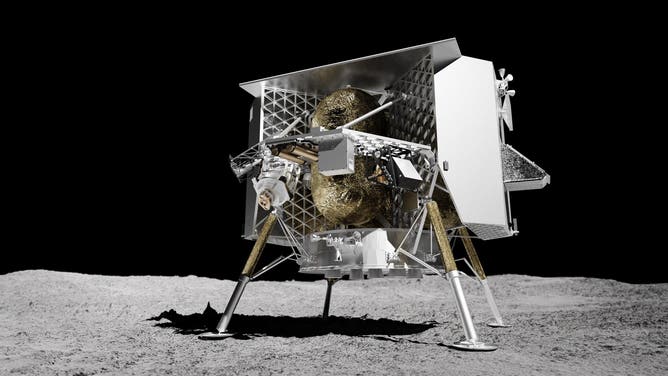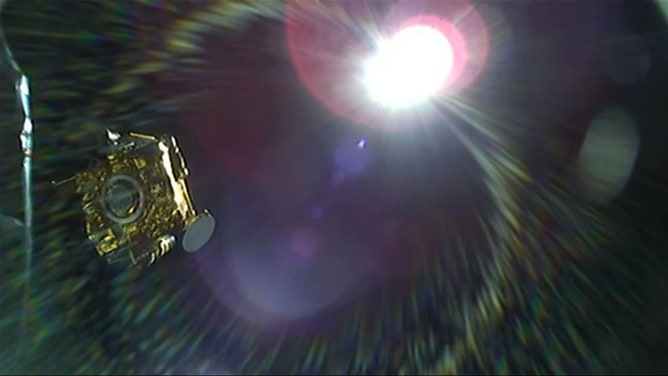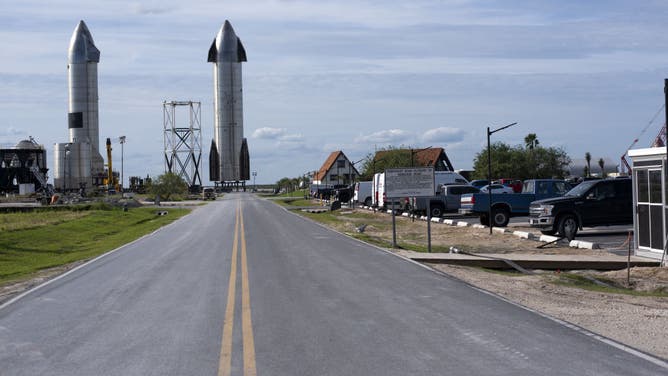Look forward to these 2022 milestones in space exploration
Starship, first JWST images and robotic moon missions will make 2022 a stellar year in spaceflight
Space exploration offers a bright spot during trying times. In the early days of 2022, it looks like this year will be no different.
Thankfully, there is no shortage of space stories to follow. It's going to be a banner year for robotic moon exploration, and the most powerful telescope ever built will begin sending back images of early galaxies and stars.
If you missed the major space news from last year, check out this recap to get you up to speed.
Here's a look ahead at some milestones in space exploration everyone can be excited about.
Artemis-1 test flight around the moon

The Orion spacecraft for NASA’s Artemis I mission, fully assembled with its launch abort system, is lifted above the Space Launch System (SLS) rocket in High Bay 3 of the Vehicle Assembly Building at Kennedy Space Center in Florida on Oct. 20, 2021. The stacking of Orion on top of the SLS completes assembly for the Artemis I flight test.
(NASA/Frank Michaux)
NASA's new moon rocket, the Space Launch System, is set to finally get off the ground in the first test launch known as Artemis-1.
The Artemis-1 launch will send an unpiloted Orion spacecraft around the moon and back to Earth. With 13% more thrust than the space shuttle, the SLS is a beast capable of launching 27 tons of cargo to the moon, according to NASA.
Currently, the rocket is assembled inside the Vehicle Assembly Building at Kennedy Space Center. The final hardware arrived in Florida late last year, marking a significant milestone for the Artemis program.
The launch is currently scheduled for March 2022, but that date is likely to change. Teams at Kennedy Space Center are working on an issue with one of the rocket's RS-25 engine flight controllers.
When it does happen, the Artemis-1 launch will draw crowds to Florida's Space Coast to see it, and millions will watch remotely from around the world.
First images from James Webb Space Telescope mission

These simulated images show how a quasar and its host galaxy would appear to NASA’s upcoming James Webb Space Telescope (top) and Hubble Space Telescope (bottom) at infrared wavelengths of 1.5 and 1.6 microns, respectively. Credits: M. Marshall (University of Melbourne)
The excitement around the James Webb Space Telescope has continued to build since its launch on Christmas morning, a few weeks ago. Now in orbit, the spacecraft continues opening up in space, emerging from its folded-up launch state.
Webb has a 21-foot, gold-plated primary mirror and massive tennis-court-sized sunshield.
The massive space telescope sees in infrared light and is so powerful it can see the first galaxies. Infrared observations are essential because this light can penetrate the dust surrounding stars and planets that are just forming, which hides visible light.
Webb will finish its journey 1 million miles from Earth by the end of January. Then begins the critical testing period to ensure all of its instruments are functioning as designed.
The first science observations aren’t scheduled to begin until mid-way into 2022.
Robotic launches to the moon

An artist rendering of the Astrobotics Peregrine lunar lander. (Image: Astrobotics)
(Astrobotics)
Human boots on the moon won't happen for a few more years, but NASA has partnered with private American space companies to purchase rides on several upcoming robotic missions to the moon.
NASA selected more than a dozen space companies to deliver science missions to the moon as part of the Commercial Lunar Payload Services program known as CLIPS.
Astrobotics' Peregrine moon lander and Intuitive Machines' lunar lander, NOVA-C, are scheduled to launch from Florida this year. Each lander is carrying NASA science but also experiments from other customers.
Peregrine will launch in mid-2022 on a United Launch Alliance Vulcan rocket, and NOVA-C will embark on a SpaceX Falcon 9, also this year.
DART smashing into an asteroid

NASA’s Double Asteroid Redirection Test spacecraft has separated from the Falcon 9 second stage and is flying on its own. Photo credit: NASA
(NASA)
In November, SpaceX launched NASA’s DART spacecraft on the first mission to test out a planetary defense plan.
DART, which stands for double-asteroid redirect test, is part of a global effort to protect Earth from potentially hazardous asteroids. NASA plans to use DART as a battering ram to crash into a near-Earth asteroid and see if the kinetic energy can change its direction by a tiny amount.
The $330 million mission consists of one spacecraft and an Italian Space Agency CubeSat called LICIACube. DART's most important asset is its mass which NASA plans to use to smash into the small moonlet Dimorphos orbiting a larger 780-meter asteroid called Didymos.
DART’s final moments will happen in Fall 2022 when it intentionally smashes into Dimorphos. Scientists on Earth should be able to observe the asteroid pair and determine if the test worked.
SpaceX Starship orbital flight

The SpaceX Starbase launch facility under construction in Boca Chica, Texas, U.S., on Sunday, Oct. 17, 2021. Photographer: Mark Felix/Bloomberg via Getty Images
(Getty Images)
Now the official ride down to the moon for NASA astronauts after winning a nearly $ billion Artemis contract, SpaceX continues to test and develop the Starship spaceship in Boca Chica, Texas, at its Starbase facilities.
Starship could make its first orbital flight as soon as March. Previous test flights have reached about 6 miles high, with Starship coming down horizontally then making an upright landing. Last year, three such tests ended in explosions, but one stuck the landing.
If you’re not excited yet about the next steps in Starship development, watch the hype video below from SpaceX with a recap of the progress so far in Texas. The massive spaceship looks nothing like any spaceflight hardware of the past.
Catching rockets with a helicopter
Speaking of rocket hardware straight out of a science-fiction plot, how about catching rocket boosters with a helicopter?
Rocket Lab had a change of heart a few years back and decided it would get into the business of reusable rockets, after all. This year the company began taking steps toward recovering its Electron rocket boosters using a helicopter. In 2022 Rocket Lab says it plans to conduct the first test catching one mid-air as it returns to Earth.